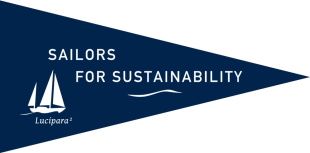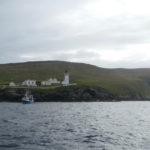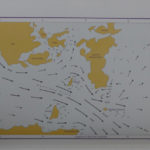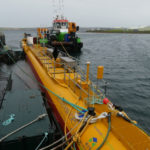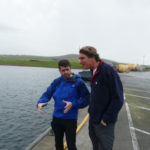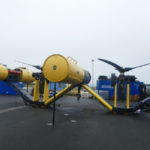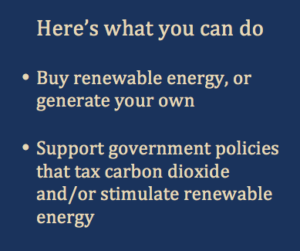Marine Energy in Orkney (GBR)
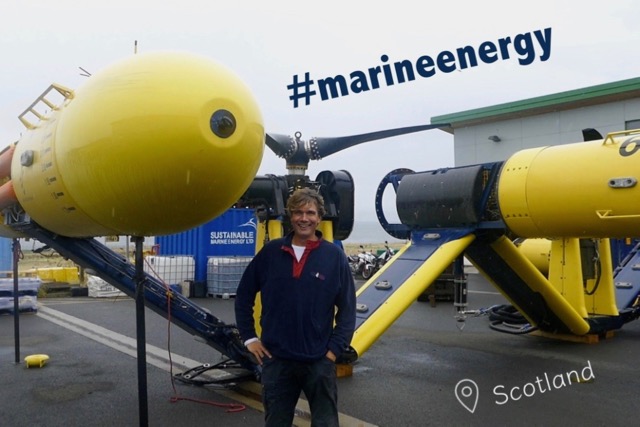
In Orkney, Scotland, public-private partnerships pioneer a new form of renewable energy: energy from the sea (tides and waves).
Contributes to achieving the following UN Sustainable Development Goals:
“The currents here are notorious and there may be strong winds and high waves. We need to time this leg carefully,” Ivar warns. We sailed from Norway to the Shetland Islands in the far north of Scotland. This sailing area is renowned for strong winds that can occur here, especially in the autumn and winter seasons. Potentially dangerous for us, but with great potential for renewable energy, in particular “marine energy”.
Challenging Sailing Conditions
From Shetland we plan to sail to Kirkwall, the capital of Orkney. We carefully study the tidal patterns and weather forecast. Although tides normally alternate every six hours, due to geological conditions significant local differences can occur. At the same time tidal currents are predictable because they result from the positions of the sun and moon, which are known. To avoid a strong headcurrent and a rough sea we consult our location-specific tide table that specifies the currents between the islands.
We time our departure to benefit from the currents and arrive before the next low-pressure system with strong winds arrives. If we fail to do plan properly, we may encounter steep breaking waves, which are dangerous for yachts.
Along the way we sail between islands where the current is strong and gives us an extra push. We arrive just in time before the tide turns and the low-pressure system arrives. Before falling asleep we hear the howling wind wrecking havoc around the boat. These extreme conditions are exciting for us, but very favorable for Orkney, as we’ll soon learn.
Water Forces
The next day David Flanagan picks us up at Kirkwall marina. He is a PR consultant and on behalf of the Islands Council shows us Mainland. It is the largest of the seventy islands which make up the Orkney archipelago. We pass small villages and bright green pastures with cows and sheep. But the friendly, rural atmosphere is deceiving: when it comes to renewable energy from the sea, Orkney is in fact the epicenter of the latest developments. They use the rugged conditions to generate electricity from tidal currents and waves, also known as marine energy.
Orkney is located just north of mainland Scotland, on the other side of a narrow strait: the Pentland Firth. With the North Sea to the east side and the Atlantic to the west, the forces of nature reign freely here. Eighteen-meter high waves and currents up to sixteen knots have been measured in the Pentland Firth. One can hardly find a better place to generate marine energy.
The Action Is Below the Surface
Orkney is home to the publicly-funded European Marine Energy Centre (EMEC). It manages five test sites in Orkney and provides connections to the main power-grid. The organization also supports research and advises on regulatory issues. Companies engaged in the development of marine energy can make use of the EMEC facilities.
The energy generation itself takes place under water. David points to the sea: “This is where it all happens.” We look at each other. Have we come all the way to Orkney to look at the sea?
But we are lucky: some large turbines can be visited on land. Near the port, the SR2000 is ready to be connected to the main power-grid. This turbine is 63 meters long and is the strongest tidal turbine in the world. It can generate about two megawatts of power. That’s enough to supply a thousand households with electricity for a year.
Elsewhere there are other turbines. These look like torpedoes separated by horizontal propellers, like something out of a science fiction movie. Energy companies that have developed these turbines perform underwater tests using EMEC’s facilities before deploying the turbines on a larger scale.
Business Talk in the Pub
In the evening we meet Stuart Allison after work in the pub near the harbor. He works for the Orkney Islands Council and is responsible for economic development. Scotland wants to use 100% renewable energy by 2020, and Stuart explains that marine energy is one of the main pillars to achieve that ambition.
“The Islands Council and the Scottish government supports research into marine energy and support its deployment,” Stuart explains over a pint of local beer. “The Crown Estate is the British government agency that manages the seabed. It has designated ten marine areas where electricity from tides and waves can be generated. Companies can lease these areas. In 2020, they should be able to generate up to 1.2 gigawatts of electricity from tides and waves.”
Energy companies have already started deploying the turbines. During our stay, the first turbine of a large-scale tidal project is anchored to the seabed. It functions in the same way as a windmill, but underwater. Because water has a much greater density than air, the device can even generate energy at low propeller speeds. The plan is for there to be up to 269 turbines. Scottish knowledge from the offshore oil industry is now used to support renewable energy. In addition, the new business opportunities stemming from marine energy create many jobs. An array of supporting enterprises have already found their way to Orkney.
From Experiment to Renewable Energy
It all sounds very promising, but how fast can this way of power generation be used on a large scale? Stuart: “Most attention is focused on power generation from tidal currents. The predictability of the sea currents and thus the electricity production is a big advantage.”
Yet Stuart dampens our enthusiasm somewhat: “It required a lot of research and technology development to build installations that work well and withstand the rough and salty sea conditions. We must also take into account the impact of the installations on marine life and shipping. Thanks to substantial investments, tidal energy is at the point where it is commercially viable to use on a large scale. Power generation from waves is less developed and not yet profitable enough to operate commercially.”
Stuart emphasizes that a good public-private partnership is essential, so that the necessary investments can be made in research infrastructure and technology development. His confidence in the future is contagious: “Thanks to our testing facilities and favorable natural conditions, also wave energy promises to become a full-fledged energy source.”
Respect for the Forces of Nature
On our way to the mainland of Scotland, we make sure to stay well out of the way of the Pentland Firth on our starboard side. On the chart, warnings of strong currents and breaking waves appear. But we look at this differently now: what a potential for marine energy!
We have witnessed the success of wind power in Denmark and hydro energy in Norway. On Orkney, too, we have seen what is possible when government and business work together to use favorable natural conditions to generate renewable energy without CO2 emissions. We are curious to see which countries will follow these examples.
Related Sustainable Solutions

Geothermal Energy (NZL)
We explore how the Kiwis make smart use of energy from the Earth and learn that we don’t need fossil fuel-based electricity at all.

Energy Storage (ESP)
On the small and remote Spanish island El Hierro, we visit a world-leading renewable energy storage solution that combines wind- and hydropower!

Solar Energy (ESP)
In one hour enough solar energy reaches the Earth to provide energy for everyone for a year. But how will we harvest and store it? Spain has the solution.
